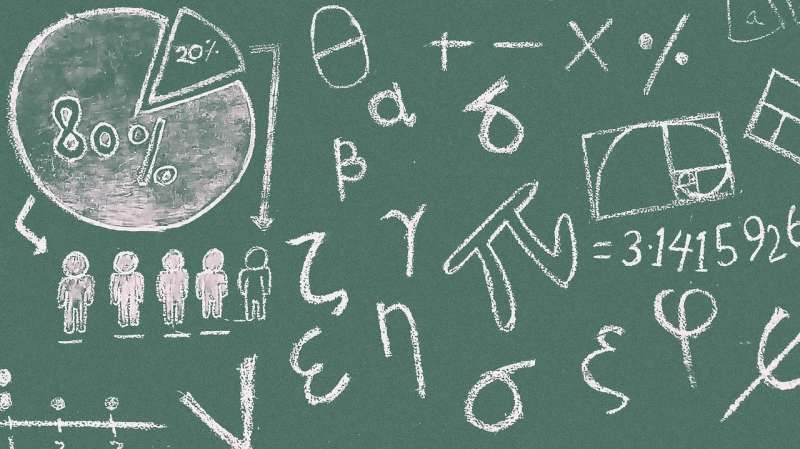Finger tracing can lift student performance in maths

Students who trace certain maths problems with a finger are able to solve them more quickly and easily, University of Sydney research shows.
Studies involving 275 Sydney school children aged between nine and 13 found that tracing over elements of maths problems enhanced how they understood and solved problems in geometry and algebra.
Tests revealed students who used their finger to trace over practice examples while simultaneously reading geometry or arithmetic material were able to complete tasks more quickly and correctly than those who did not use the same technique.
"Our findings have a range of implications for teachers and students alike. They show maths learning by young students may be enhanced substantially with the simple addition of instructions to finger-trace elements of maths problems," said Dr Paul Ginns, Senior Lecturer in Educational Psychology and the research's corresponding author.
"We are cautiously confident such effects could be applied in the classroom and to subjects outside of maths, but more research is clearly required," he said.
Dr Ginns, and co-researchers Professor Janette Bobis, Dr Fang-Tzu Hu and Erin Byrne, believe using an index finger to physically touch and trace the angles of a triangle, for example, can result in that information receiving processing priority in the brain. Doing so may reduce the load on working memory and its ability to retain complex material by 'chunking' information together.
"At the classroom level, teachers can assist students to learn new mathematical content by giving instructions to 'trace over' the important elements of worked examples that already appear in mathematics textbooks or worksheets. This simple, zero-cost teaching approach can enhance the effectiveness of mathematics instruction across multiple areas of the subject," said Dr Ginns.
The research is published in Learning and Instruction and Applied Cognitive Psychology.
Teachers have used finger-tracing since the early 1900s, when Montessori got young children to trace over letters of the alphabet made from sandpaper with their index fingers. While this approach was at the time based on intuition rather than evidence, later studies would confirm that finger tracing aids recognition of letters and shapes.
Yet, researchers are only now starting to explore if finger tracing's benefits could extend to more complex mathematical tasks that require higher levels of abstract thinking and problem solving.
Journal information: Learning and Instruction
Provided by University of Sydney



















